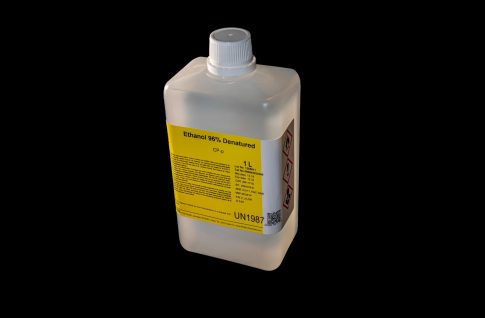A Beginner’s Guide to Ethanol: Uses and Safety Tips

Ethanol is widely used in the production of medicines, fuels, paints, and other goods. Due to its antiseptic and antimicrobial effects, it plays a key role in the pharma industry.
Also known as ethyl alcohol, this organic compound has a flash point of 55 degrees Fahrenheit — that’s the lowest temperature at which its vapors will ignite on exposure to an open flame. Simply put, ethanol is highly flammable and may cause a fire.
If you work for a company that manufactures fuels or medications, you’re probably familiar with ethanol uses. What you may not know is that it can be toxic under certain circumstances.
Manufactures add this substance to hand sanitizers, motor gasoline, perfumes, and tinctures. E10, for example, is about 10 percent ethanol by volume, while E85 is up to 83 percent ethanol.
As a manager or business owner, it’s important to train your staff on how to use ethanol safely. Despite its potential benefits, this chemical may pose health hazards. Here’s what you should know about it.
What Is Ethanol?
Ethanol is a colorless liquid with the chemical formula C2H6O. It belongs to a class of organic compounds called primary alcohols and has a pungent taste.
This substance can be converted into acetaldehyde, a flammable liquid that can irritate the skin, eyes, and lungs. When exposed to heat, ethanol may cause severe burns and start a fire.
Manufacturers produce ethanol from the fermentation of starch or sugar. Some mix it with gasoline to produce environmentally friendly fuels. Compared to diesel or gasoline fuel, this substance burns more cleanly and may help reduce greenhouse gas emissions.
Ethanol Uses
Ethanol has applications in several major industries, including chemicals, pharmaceuticals, and feedstock.
Pharma companies, for example, use it as an ingredient in antiseptic products and medicinal solvents. This compound may also be administered as an antidote to methanol or ethylene glycol poisoning.
Manufacturers also add ethanol to engine fuel, deodorants, mouthwash, paints, and other products. Furthermore, ethanol occurs naturally in beer, wine, and spirits. After ingestion, it’s converted to acetaldehyde and then to CO2 and water.
Health Hazards of Ethanol
Just because ethanol is a naturally occurring compound doesn’t mean it’s safe.
First of all, it’s flammable and may produce toxic gases when exposed to heat. Second, it can irritate the throat, nose, and lungs when inhaled.
Exposure to large amounts of ethanol may cause nausea, vomiting, headaches, and blurred vision. In the long run, it may affect the central nervous system and liver function. Direct contact may result in dry skin, itching, and eye irritation.
Note that ethanol can be absorbed through the skin. Over time, it may cause organ damage. It’s particularly harmful to the liver and lungs.
If your employees are using ethanol, make sure they know how to handle it safely. Provide them with adequate equipment to prevent the unintentional escape of vapors and liquids. Any pipes, valves, and electrical wiring used in processing plants must be inspected regularly.
Since this compound is extremely flammable, keep it stored in tanks that meet the required safety standards. Install ethanol vapor monitoring devices and other engineering controls to prevent fires.
Keep Your Employees Safe
Now that you know more about ethanol uses and health hazards, take the steps needed to protect your staff — and your business. Invest in quality equipment, provide your employees with safety sheets, and ensure adequate training.
In the meantime, check out our safety data sheet management solutions! Schedule a demo today or contact us to discuss your needs!
